In the petrochemical, chemical, electric power, metallurgy, municipal, pharmaceutical and other industries, the technical difficulty and complexity of flow measurement are quite high, the study of flow measurement to improve product quality, reduce the operating costs of enterprises, address energy saving and environmental protection play an important role.
The electromagnetic flowmeter has no resistance, and no pressure loss advantages, and can fully reduce the resistance in the pipeline, in line with the requirements of energy saving and consumption reduction, thus electromagnetic flowmeters in the industry have been widely valued.
However, although the electromagnetic flowmeter has the above advantages, and in terms of reliability and stability are much better than most other types of flowmeter, in the actual use of the process, some problems will occur, the following is a list of the electromagnetic flowmeter in engineering applications need to pay attention to the main points.
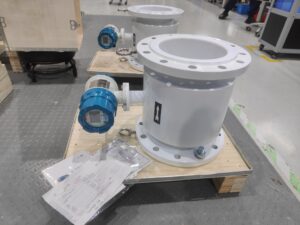
1. The transmitter should be installed in a position where the measuring tube can be filled with liquid at all times to prevent the illusion that the pointer is not at zero due to the absence of liquid in the measuring tube. It is best to mount vertically to reduce errors caused by liquid flowing through to create bubbles on the electrodes. If installed horizontally, the two electrodes of the meter must be kept on the same level in order to prevent it from being insulated by deposits or air at the top of the tube.
2. If required, the tube can be allowed to empty and the built-in empty tube detection circuit will stop the signal output for totalisation and flow.
3. When installing electromagnetic flowmeters for fluids flowing in anodically protected pipelines, the following points should be followed: use a ground ring in order to ground the fluid well; when the sensor is connected to the pipeline, insulating pads should be used between the flanges and an insulating sleeve should be used on the screw.
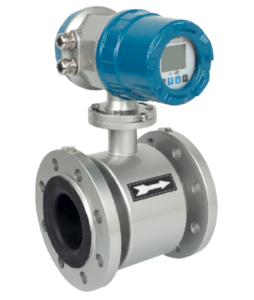
4. When the electromagnetic flowmeter is installed in the grounded metal pipe, through the electromagnetic flowmeter transmitter on the grounding terminal to achieve system potential balance, that is, through the cross-sectional area of not less than 6mm2 copper core wire connected to the grounding terminal; when the electromagnetic flowmeter installed in the ungrounded metal pipe, 2 flanges are connected to the pipe flange through the cross-sectional area of at least 6mm2 copper core wire, and grounding; will Transmitter or sensor junction box is connected to the grounding terminal to achieve system potential balance; when the electromagnetic flowmeter is installed in plastic pipes or pipes with insulating lining, the system potential balance is achieved by additional grounding ring, the grounding ring is connected to the grounding terminal by a copper core wire with a cross-sectional area of at least 6 mm2.
5. Electromagnetic flow transmitter should be installed indoors in a dry and ventilated place, avoid installation in places where the ambient temperature is too high, should not be subject to strong vibration, and try to avoid equipment with strong magnetic fields, such as large motors, transformers, etc., to avoid installation in corrosive gases, the installation site is convenient for maintenance, which is to ensure the normal operation of the transmitter environmental conditions.
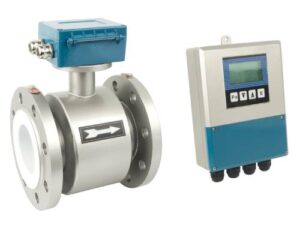
6. In order to ensure that the electromagnetic flow transmitter measuring tube is filled with the measured medium, the variator should preferably be installed vertically with the flow direction from bottom to top, especially for liquid-solid two-phase flows, which must be installed vertically. If only horizontal installation is allowed on site, it must be ensured that the two electrodes are at the same level.
7. Valves and bypasses should be fitted at both ends of the electromagnetic flow transmitter.
8. Electromagnetic flow transmitter electrodes measured by a few millivolts of AC potential, are based on the potential of the liquid inside the transmitter.
In order to make the liquid potential stable and bit the transmitter and fluid to maintain equipotential to ensure stable measurement, the transmitter housing and metal pipe ends should be well grounded, the converter housing should also be grounded, and grounding resistance can not be greater than 10 ohms, can not be shared with other electrical equipment grounding wire.
If you cannot guarantee good contact between the transmitter housing and the metal pipe, you should connect them with a metal wire and then ground them reliably.
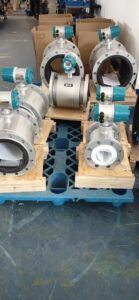
9. In order to avoid interference with the signal, the signal between the transmitter and the converter must be transmitted with a shielded wire, it is not allowed to put the signal cable and the power cable in parallel in the same cable steel tube, and the signal cable length must not exceed 30m in general.
10. The installation site of the converter should avoid strong magnetic fields and vibrations in AC and DC, the ambient temperature should be -20~50°C and should not contain corrosive gases and the relative humidity should not be greater than 80%.
11. In order to ensure the normal operation of the electromagnetic flowmeter, and reduce measurement error, the electromagnetic flowmeter before and after should meet certain straight pipe section requirements. Usually, the front straight pipe section should reach 10D and the rear straight pipe section should be 5D.
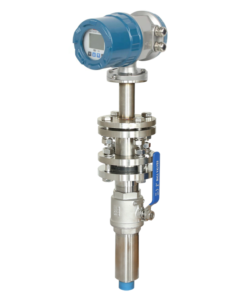
12. Installation position. The electromagnetic flowmeter can be installed vertically or horizontally, but vertical installation is recommended and the fluid to be measured is flowing from the bottom up. It can also be installed horizontally, but so that the two electrodes are on the same level. Horizontal installation ensures that the measuring tube is filled with fluid at all times. When the main line is vertical, it is generally required that the flow is bottom-up and as far as possible not top-down.
The latter tends to cause relatively large fluctuations in flow. The installation is also important for this point in addition to a full pipe, followed by the distance between the front and rear straight pipes. Choose a place that is easy to maintain and easy to move around.
The flow meter should be installed at the back end of the pump, never on the suction side: the valve should be installed on the downstream side of the flow.
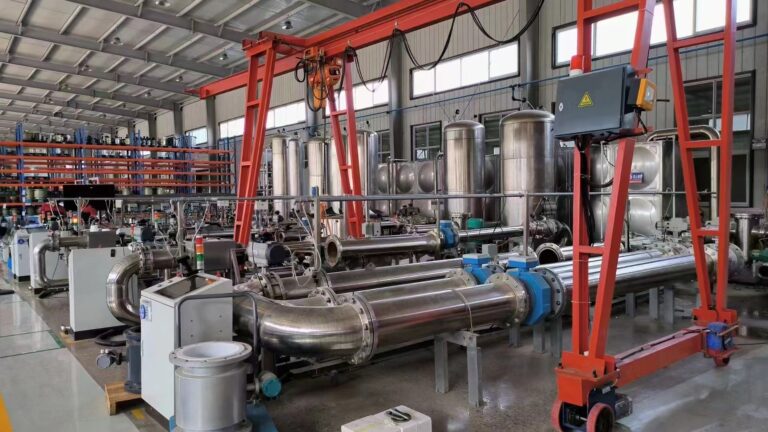
13. The electromagnetic flowmeter needs to exclude all external interference in order to accurately measure, and therefore a good grounding is to protect the stable work of the electromagnetic flowmeter with necessary conditions. Usually, the grounding is achieved through the grounding ring or the reference electrode inside the sensor and the grounding connection of the piping system
14. The installation location of the flowmeter should be far away from all magnetic sources (such as high-power motors, transformers, etc.).
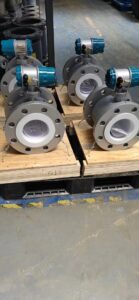
15. Same with other flowmeters, electromagnetic flowmeter also has a level of protection, usually integrated protection level of IP65, split IP68 (for the sensor), if the customer has requirements for the instrument installation environment, the installation site in the underground Yin well or some other wet places, it is recommended that customers choose the split type. In order to avoid damage to the instrument by the wrong choice.
16. The electromagnetic flowmeter can measure corrosive liquids, but the customer should correctly provide other measurement media properties at the beginning of the order, so as to avoid errors in the selection of the electrode selection, resulting in the sensor in the later use of the process of scrap, bringing inconvenience and economic losses to customers.
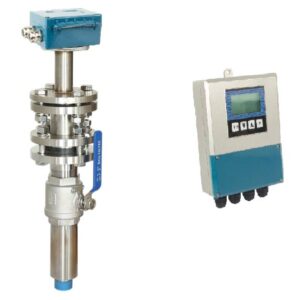
17. Although the electromagnetic flowmeter reliability is relatively good, under normal circumstances will not be damaged, but because of its principle decision, the sensor electrode surface has been in contact with the liquid, and time and the electrode surface is relatively easy to be contaminated. So electromagnetic flowmeter in general, the customer has the conditions to dismantle the case, it is recommended that it between one year to one and a half years dismantle out to clean the electrode to ensure that the flowmeter’s whole measurement accuracy. Any instrumentation is required for “maintenance”, electromagnetic flowmeter is no exception.
